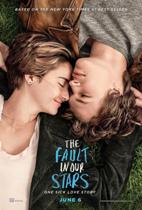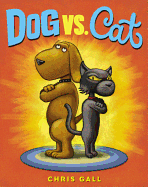 |
| photo: Laura Lewis |
Lily King grew up in Manchester, Mass. She received her B.A. in English Literature from the University of North Carolina at Chapel Hill, and her M.A. in Creative Writing from Syracuse University. She has taught English and creative writing at several universities and high schools in the U.S. and abroad. Her three previous novels are The Pleasing Hour, The English Teacher and Father of The Rain. Her short fiction has appeared in literary magazines, including Ploughshares and Glimmer Train, as well as in several anthologies. King is the recipient of a MacDowell Fellowship and the Whiting and PEN/Hemingway Awards, among others. She lives with her husband and children in Maine.
Presumably even this "loosely based" work required research into the field of anthropology and Margaret Mead's life. Did you have any background to begin with? Did you enjoy this research?
It required a ton of research and no, I had zero background in anthropology or ethnology, not even one anthropology course in college! Like many writers, though, I have always felt like an extremely amateur and untrained anthropologist in the world, observing the huge, crazy mysteries of human behavior and writing it all down in novels.
On the one hand, you enjoy the research because it's not writing, which is much harder, but on the other hand you miss writing miserably and feel like a part of you is dead. I had so much to learn before I could start, but because I always knew the book would be fiction, I didn't want to get too attached to any one detail or fact. I read a lot of books at a squint, taking notes but always letting my imagination in on it, writing more notes on what could happen than what did happen, but at the same time trying to absorb all the information in some visceral way so that it felt like personal experience I could draw from when I started writing. And it was hard to know when to start writing. There was always, always more to read, more to learn. When I finally decided it was time, the research loomed over me. But once I wrote the first scene, I felt it become my story, and all that information became useful, not threatening.
What makes Margaret Mead such a good subject for this work? And when did you know you wanted to write about her?
I stumbled into the novel by reading a biography of Margaret Mead nine years ago and coming across this one short chapter about when she was way up this river in Papua New Guinea with her second husband and she met her third. She fell in love hard and fast in this completely isolated environment. She believed in an open marriage, what she called "polygamy," and her husband did not, but she was very honest about her feelings and the whole thing, combined with the heat and mosquitoes and malarial fevers, was just a wild mess. So of course I thought, what a fantastic novel that would make. For a long time I didn't believe that I would actually write it. But I kept going out and getting books about them and by them and taking notes and getting ideas while at the same time thinking: I cannot write this novel. I cannot write a novel about a love triangle between anthropologists in Papua New Guinea in 1933. It was preposterous. But I couldn't seem to stop myself, either.
How did the writing of Euphoria differ from your three previous novels?
With the first three, I was able to just start writing. Each of them required a little detour to the library for something, but usually not until I was deep in, after the first draft had been written. But for this one I didn't even write a sentence for a year after I got the idea. I was working on my novel Father of the Rain while reading everything I could get my hands on about Margaret Mead and Gregory Bateson and Reo Fortune. And when I got that first sentence--four sentences, actually--in a coffee shop, I didn't write anything else for several more years. That little cluster of sentences, though, helped me feel I could write the rest someday. They are the words that open the book still and are not much changed from when I scribbled them down at the back of a notebook in that coffee shop. That was very different. With the other books, once I got the first sentences I kept going for fear the initial vision would cloud over and vanish.
Euphoria is told in first person by Bankson, who is the outsider in his own tale. This gives the reader a somewhat restrained perspective. How did you decide to tell it this way? Did you toy with giving Nell her own voice?
That's an excellent question. The plan all along was for it to be told from Nell's point of view. It was supposed to be her story entirely. And it did start that way. But after I wrote the first chapter, I realized I needed the reader to feel what was going on with Bankson, the man she is about to meet and fall in love with, so I wrote that next chapter from his perspective. It surprised me how much closer I was able to get to him, and so quickly, how I was able to get inside him in a way that I was not inside her. This is something that all the planning and plotting of a book can't anticipate. I knew I was a bit in love with him even before I started writing, so I thought it would be so easy to write from Nell's perspective about falling for him. I just never expected to identify with him so closely, sort of fuse with him. But once I did, I realized it was his story. I denied this for a while, actually, and tried to write the book from all three points of view, but apart from Nell's journal entries, Bankson claimed the whole thing in the end.
How important is historical accuracy in fiction? How faithfully does your novel follow the historical record?
Fiction is called fiction for a reason. While I used what I read about a particular moment in the life of Margaret Mead as a springboard, I felt absolutely no allegiance to historical accuracy when it didn't work within the story I was trying to tell. Some of Euphoria is historically accurate, but not because I forced it to be, just because those elements were useful to me. They inspired me. I love history and I love reading about history and I treasure what little I know about our past on this earth, but a novel is not where I go for facts. A novel is where I want to feel the truth. Sometimes you need facts to get at the truth; more often you need your own voice and vision. --Julia Jenkins
Lily King: Feeling the Truth
 The Circle of Trust. That's where Hazel and Gus and Isaac sit in an elliptical arrangement of chairs, in "the heart of Jesus," in an Episcopal church in Indianapolis, sharing their cancer experiences. It also describes what John Green has built with his fans. A Circle of Trust.
The Circle of Trust. That's where Hazel and Gus and Isaac sit in an elliptical arrangement of chairs, in "the heart of Jesus," in an Episcopal church in Indianapolis, sharing their cancer experiences. It also describes what John Green has built with his fans. A Circle of Trust.

















